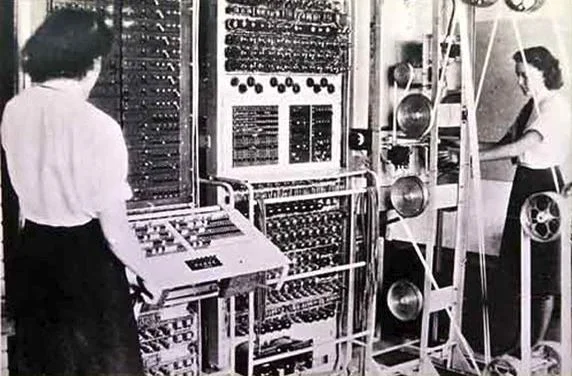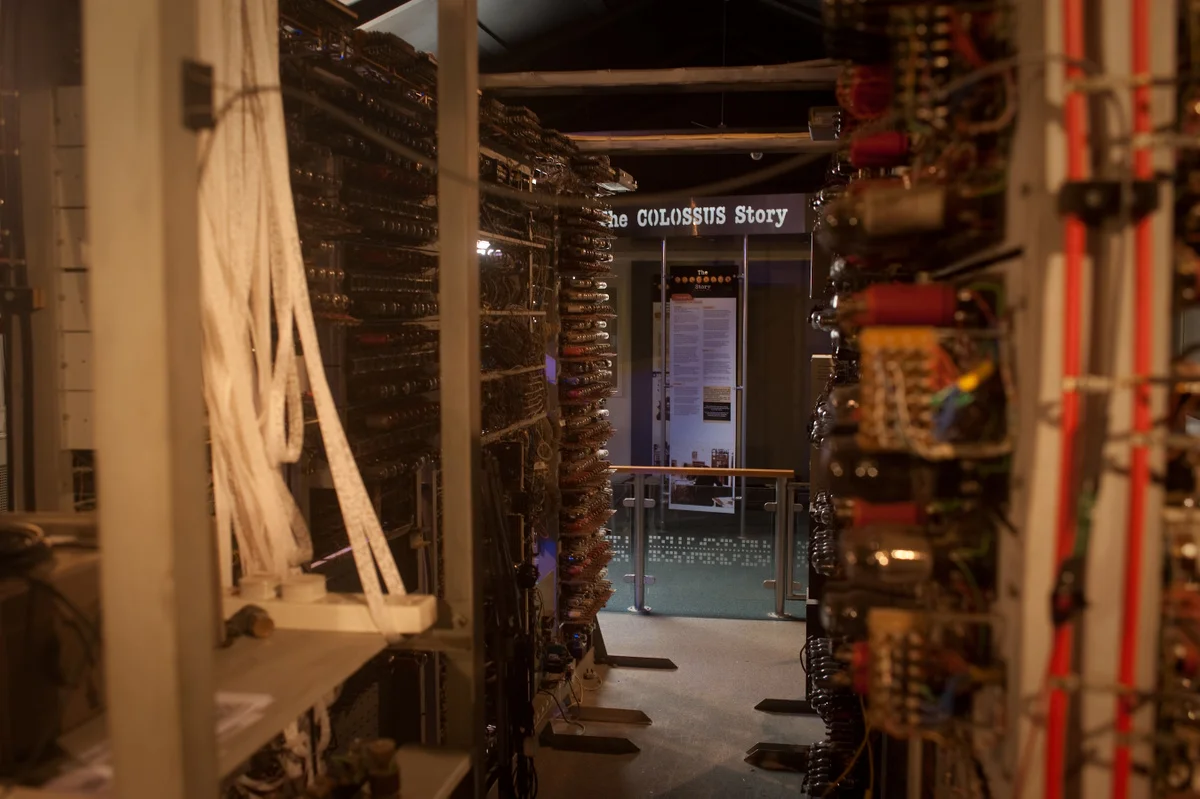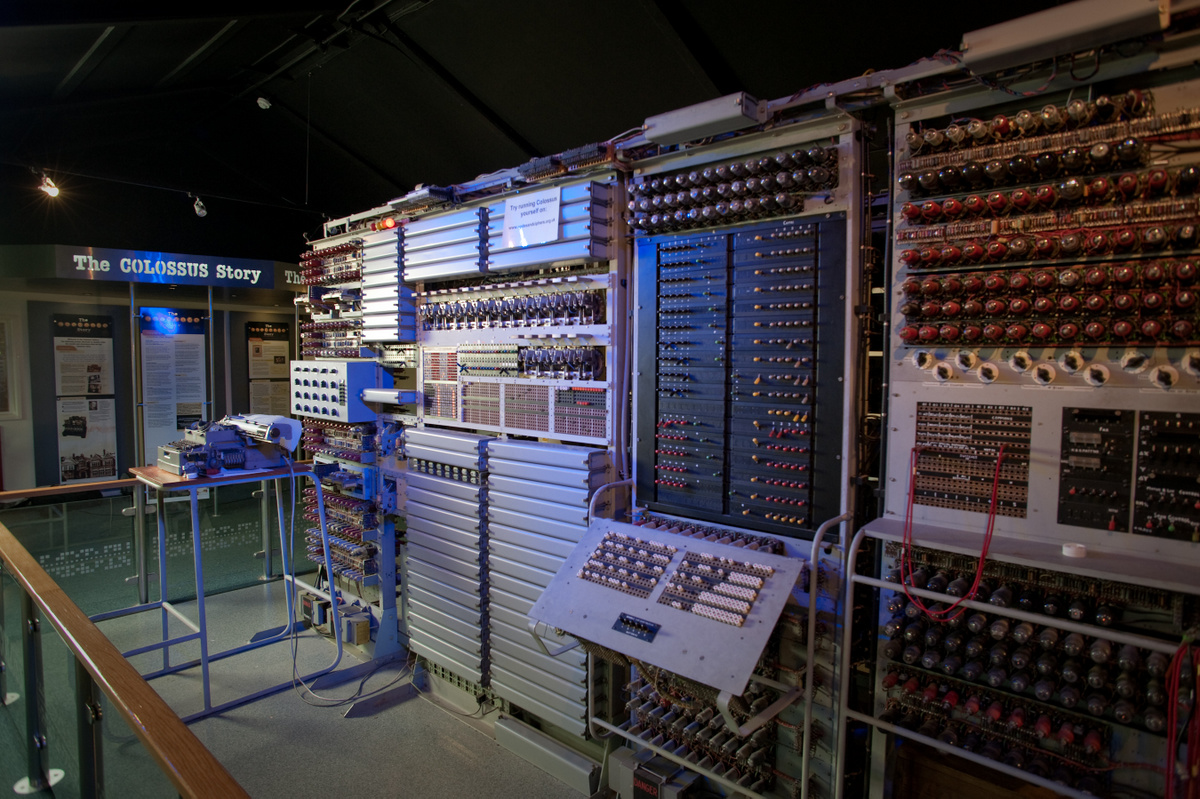Celebration of the 75th anniversary of Colossus
/Colossus veterans to hear of their D-Day achievements
at the celebration of the 75th anniversary of Colossus
Colossus veterans and families will gather at The National Museum of Computing on Wednesday 29 May 2019 to celebrate the 75th anniversary of the code-breaking machine that had such a huge impact upon the outcome of the second world war.
Colossus Mk I became operational on Bletchley Park on 5 February 1944 and was so successful in tackling Lorenz-encrypted messages between Hitler and his generals, that more were ordered. A deadline for another was set for 1 June, although Tommy Flowers and his team would not then have known that this may have been to coincide with D-Day preparations when insights of German strategic communications would be crucial to the invasion’s success. Colossus Mk II arrived in May and was in partial operation on 1 June 1944. More were to follow such was the confidence in the technology.
On 29 May 2019, the significance of some of the intelligence obtained with the help of the Colossus machines will be revealed to the veterans and families. During the war, the Wrens who operated Colossus had little idea of the importance of their work. For decades afterwards, secrecy bound them not to speak of what they did at Bletchley. Only in recent years have they come to realise the impact of their work and even today, now in their 90s, they know few of the details.
Speakers at the event will highlight the pressures codebreakers worked under in the run-up to D-Day and the difficult choices they had to make in deciding what Lorenz messages to tackle. From their research at the National Archives, they will also be able to reveal some of those key pieces of intelligence that Colossus and the codebreakers were able to uncover and that gave the architects of D-Day the confidence to know that the enemy had swallowed the vast campaign of deception over the place, timing and scale of the Allied landings. For most of the veterans, this will be the first time they will have had access to the details of what their work had revealed.
At the Museum, housed in Block H where six of the ten Colossi were operational at the end of the war, original German Lorenz encryption devices are on display alongside working reconstructions of the British technology that intercepted and deciphered the messages: Colossus, Heath Robinson (the predecessor to Colossus) and the Tunny machine.
Also on display will be the Bombe reconstruction that will be demonstrated to show how the key of the day for D-Day was discovered to reveal the Enigma-encrypted messages about German operations on that crucial day of 6 June 1944.
Notes To Editors
1 A short history of Colossus
German teleprinter signals encrypted by Lorenz machines were first heard in Britain by police officers on the south coast listening for possible spy transmissions in 1940.
In August 1941, a procedural error by a German operator enabled Colonel John Tiltman, a top codebreaker at Bletchley Park, to decipher a message.
Brilliant mathematician Bill Tutte began working on the case and was able to deduce the complete logical structure of the cipher machine which we now know as Lorenz.
Codebreakers in the Testery, under Colonel Tester, began breaking the codes by hand, but this was very time consuming.
The head of the Newmanry, Max Newman, a mathematician at Bletchley Park, believed certain aspects of the decryption process could be automated. Initially, electro-mechanical Robinson machines (named after the cartoonist Heath Robinson) were used to find the start positions of the Lorenz wheels to speed up codebreaking. But the Robinson machines had shortcomings.
Tommy Flowers, an ingenious Post Office electronics engineer at Dollis Hill, was asked to improve upon the Robinsons, but instead designed Colossus, the world's first electronic computer which enabled the Lorenz start-wheel positions to be found in a few hours, thereby greatly shortening the code-breaking process and enabling larger numbers of messages to be broken.
Colossus Mark I began operating on 5 February 1944, and was supplemented in June of that year by the Mark II. By the end of the war there were ten functioning Colossi working around the clock helping to decipher the messages of German High Command.
The deciphered messages provided the Allies with crucial intelligence on what enemy armed forces were plotting. The allies knew for example that Hitler had swallowed the bait that the D-Day landings in June 1944 would be at Calais rather than Normandy. This gave the Allies a decisive advantage.
As a direct result of Colossus, the war was shortened and countless lives saved.
By the end of the war, 63 million characters of high-grade German messages had been decrypted by the 550 people working on the Colossi at Bletchley Park.
2 About The National Museum of Computing
Now fully open Tuesdays to Sundays, 10.30 am to 5.00 pm.
The National Museum of Computing, located on Bletchley Park in Block H, one of England’s ‘irreplaceable places’, is an independent charity housing the world's largest collection of functional historic computers, including reconstructions of the wartime code-breaking Colossus and the Bombe, and the WITCH, the world's oldest working digital computer. The Museum enables visitors to follow the development of computing from the ultra-secret pioneering efforts of the 1940s through the large systems and mainframes of the 1950s, 60s and 70s, and the rise of personal computing in the 1980s and beyond.
The Museum runs a highly successful Learning Programme for schools and colleges and promotes introductions to computer coding amongst young people to inspire the next generation of computer scientists and engineers.
Sponsors of the Museum have included Bletchley Park Science and Innovation Centre, Fujitsu, InsightSoftware.com, Paessler AG, Sophos, Issured, Lenovo, Bloomberg, Ocado Technology, Ceravision, CreateOnline, 4Links, Google UK, IBM, NPL, HP Labs and BCS.
For more information, see www.tnmoc.org and follow @tnmoc on Twitter and The National Museum of Computing on Facebook.
Media Contacts
Stephen Fleming, Palam Communications, for The National Museum of Computing
01635 299116
s.fleming@palam.co.uk






